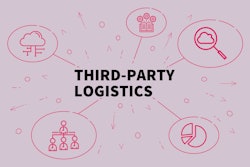
Over the past year, distributors flexed some of the resilience muscles they gained during the COVID-19 pandemic.
Supply chain disruption was an ongoing concern, but distributors managed it by maintaining larger inventory levels and securing a deeper bench of potential vendors. As distributors navigate inventory levels to be more appropriate, they have trusted partners in place to help them overcome lockdowns and shipping delays.
Higher interest rates impacted capital decisions and slowed some investment, but most distributors handled inflationary pressures quite well. Parties across the value chain communicated openly, so vendors and distributors were able to handle price increases or pass them on to end consumers.
Some challenges persisted — and will continue in the year ahead. Labor is an ongoing issue for distributors, and economic and geopolitical uncertainties are keeping everyone on their toes. With a U.S. presidential election ahead, distributors are steeling themselves for the unknown. Most are strengthening partnerships and adding layers of strategy to avoid any major disruption.
2024 Priorities for U.S. Distributors
To navigate the opportunities and challenges the new year will bring, distributors need to address four strategic priorities:
1. Digital Transformation
Like labor, technology is now a persistent issue for distributors. Distributors need new capabilities to compete today — and to set them up for longer-term revenue growth and profitability. They must determine a strategic approach to digital transformation to guide their investment plans.
Most companies are prioritizing automation, machine learning, artificial intelligence (AI) and predictive analytics capabilities to give them speed and agility. Distributors need to be quick and responsive to live up to the “Amazon expectation.”
The good news is that digital investments pay off. With data, distributors can drive better decisions, eliminate inherent biases and improve profit margins.
Distributors have choices. There are several digital transformation paths they can take (or combine) to manage information (and the business) more effectively. For example:
- AI, predictive analytics and forecasting tools can help distributors predict demand and manage inventory. That helps distributors lower their carrying costs and limit stockouts.
- Warehouse automation and robotics tools can pick, pack and ship goods autonomously. Distributors can book and fulfill orders faster and with fewer errors. Meanwhile, human labor can be reallocated to more valuable (and rewarding) work.
- Logistics and route optimization tools can determine optimal delivery routes, which saves both time and money.
- Pricing tools can help distributors optimize their margins and even adapt pricing strategies to the individual customer level. They can price on demand, spot opportunities to move goods and gain insight to renegotiate contracts with suppliers.
Every digital strategy starts with data. Distributors need to capture clean, timely and reliable data. And they need to protect it. As businesses become more reliant on technology, adopting data hygiene and cybersecurity practices will help them maintain their resilience.
2. Customer Experience
Faster delivery. Fewer errors. Personalized pricing. Guess who else benefits from digital transformation projects? Customers.
Distributors need to catch up to the market to meet consumers’ expectations for speed and convenience. Now they’re competing with direct-to-consumer channels — and against brands that may have deeper relationships with end customers.
It’s critical to find ways to differentiate services and get closer to customers. They need to understand their value proposition — and consistently perform as the best choice for customers.
That takes being responsive, accurate and quick. Distributors should communicate with customers via their preferred channels and create seamless, unified cross-channel experiences.
Becoming customer-centric also requires a mindset shift for employees. Most likely, employees haven’t thought much about customer experience or how their work affects a customer’s relationship with the business. Now, they must. To deliver convenient, fast and personalized services, customer experience must be top of mind all the way down the line.
3. Talent Strategy
The national labor shortage is a long-term problem that could get worse. As baby boomers retire, there aren’t enough people to fill jobs. To tackle recruitment and retention, distributors must prioritize the employee experience. They need to listen to employees, just as they would customers, and respond with thoughtful strategies.
Two focus areas are essential: Technology and culture.
AI and automation can help distributors ease their reliance on human labor. The goal shouldn’t be to replace people but rather to supplement their hard work and talents. With data, distributors can learn how and where to apply technology to remove the most repetitive and non-value-adding work from employees’ to-do lists.
To set the culture, executives should reexamine their leadership styles. It’s their job to create an environment people want to be part of, and where people get excited to come to work.
Today, leadership requires a higher degree of curiosity and empathy toward each person. Be intentional about experiences and rewards. Make sure growth opportunities and benefits are meaningful to the individuals who work for you.
Leaders also need to put time and energy into an employee value proposition. Employees’ priorities have changed since the pandemic. If they’re not feeling supported or valued at work — or doing valuable work — they are likely to seek other opportunities.
Employees will help you grow the business once they understand why it matters. People need purpose in their everyday lives. Once people feel cared for and connected to something bigger, they can (and will) do their best work.
4. Business Climate
Technology, customer experience and culture are difficult to manage, but they’re within distributors’ control. In 2024, distributors also need to contend with a wildcard business environment.
Economic and geopolitical concerns aren’t easing and could cause disruption. The U.S. presidential election will create additional uncertainties.
Distributors should be strategizing now, so they understand the potential implications across several dimensions. This is the time to map out “what if” scenarios for possible industry and business changes, customer preference shifts, and supply and vendor impacts.
Higher interest rates will slow down some investments. That makes strategic road maps even more important. Investments should have clear payoffs and allow companies to build strengths and capabilities over time.


















